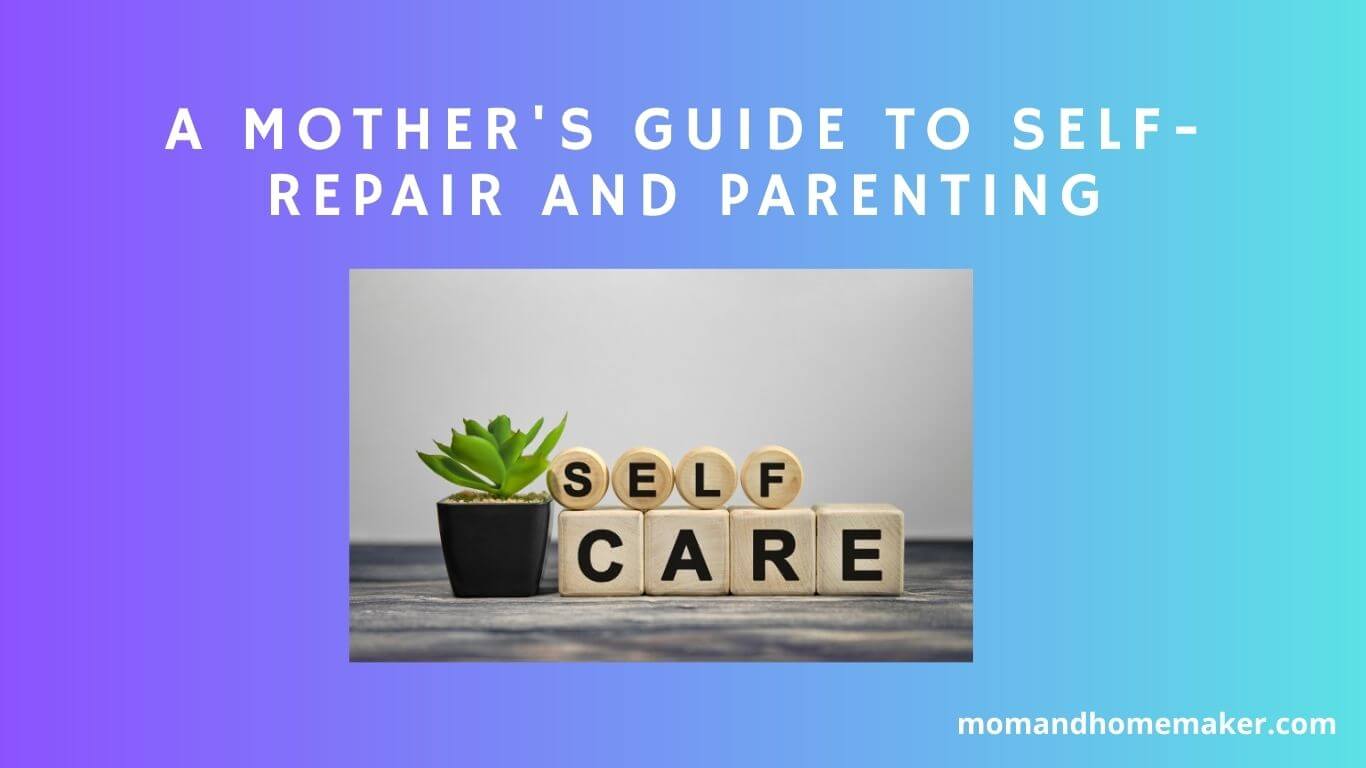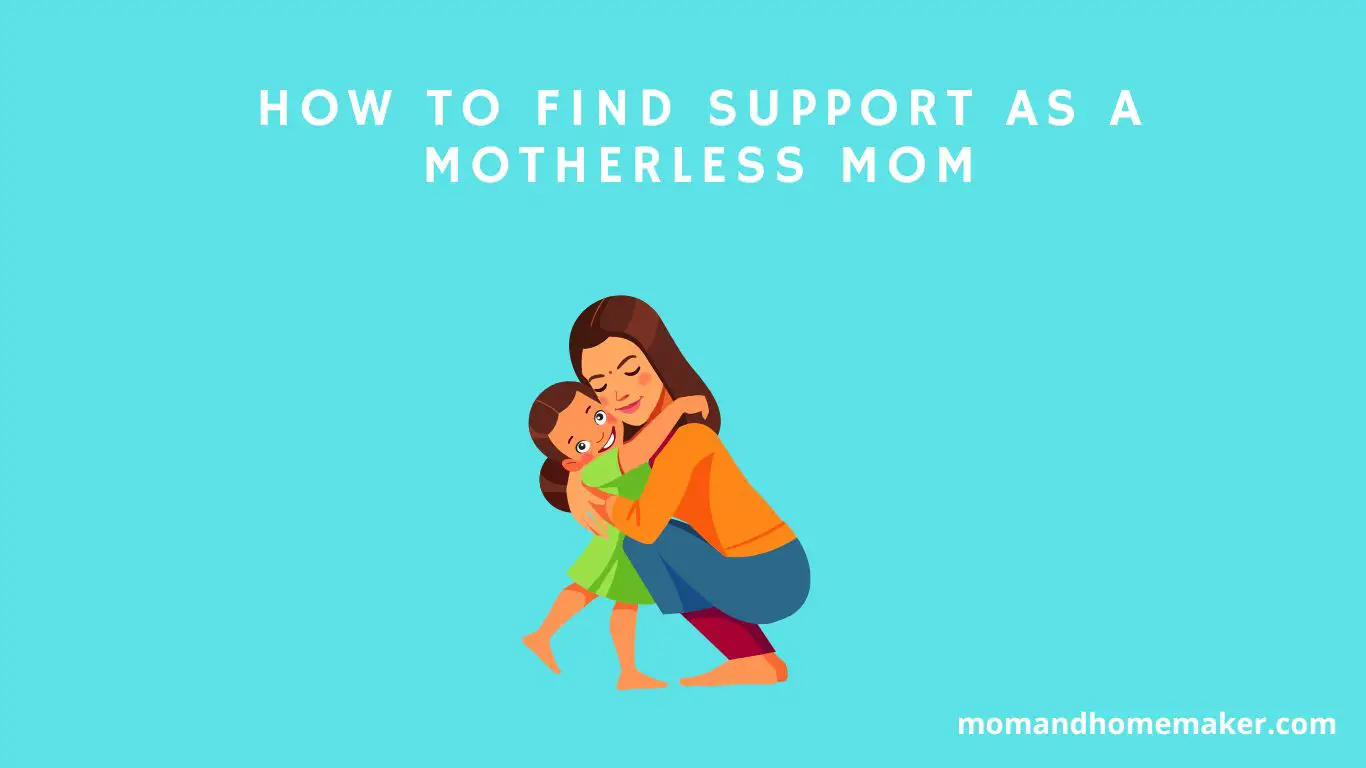If you’re considering becoming a stay-at-home mom but are unsure about the financial side of things, it’s essential to understand the impact of moving to a single-income household.
Figuring out how much money to save can feel overwhelming, but fear not! We’re here to help you navigate this process and plan effectively for this significant life change.
By following some key financial planning strategies, you can work towards turning your dream of being a stay-at-home mom into a reality.
Assess Your Current Financial Situation
Before deciding to transition to being a stay-at-home mom, it’s crucial to carefully assess your current financial situation. Start by looking at your income sources, such as salaries and bonuses, to determine if you can manage on a single income.
Additionally, evaluate any investments you have, like savings accounts or stocks, to understand your financial stability.
Take a close look at your budgeting habits and financial goals. Identify areas where you can cut costs to adjust to a one-income household and set realistic financial goals for your family.
Whether it’s saving for your children’s education or building an emergency fund, ensure your goals are achievable within your new financial framework as a stay-at-home mom.
Calculate Monthly Expenses
When planning to transition to being a stay-at-home mom, understanding your monthly expenses is crucial. To begin, it’s important to create a detailed budget breakdown. Start by tracking all your expenses for a few months to get a clear picture of your spending habits.
Categorize your expenses into groups like housing, utilities, groceries, transportation, childcare, healthcare, insurance, debt payments, and other miscellaneous items.
Once you have a thorough overview of your spending patterns, you can pinpoint areas where you might be able to reduce expenses to adjust to a single-income household. Identify non-essential expenses that could be cut down or eliminated.
Consider creating a new budget tailored to your future stay-at-home mom lifestyle. Factor in any additional costs that may come up from spending more time at home, such as higher utility bills or home maintenance expenses.
Consider Emergency Savings
When planning for your transition to being a stay-at-home mom, it’s crucial to consider the importance of having emergency savings. These funds act as a safety net, helping you navigate unexpected expenses like medical bills or home repairs without disrupting your financial stability.
To build your emergency fund, start by setting a clear savings goal, aiming to set aside at least 3-6 months’ worth of living expenses. You can automate your savings by scheduling regular transfers to your emergency fund account.
Additionally, cutting back on non-essential expenses and finding ways to increase your income, such as through freelance work or selling unused items, can help boost your savings.
Consider keeping your emergency fund in a high-yield savings account to maximize growth while ensuring easy access when needed. By prioritizing emergency savings, you can create a sense of security and peace of mind for you and your family, preparing you for any unforeseen financial challenges that may arise.
Factor in Health Insurance Costs
When considering the financial implications of transitioning to a stay-at-home mom role, it’s important to factor in the costs of health insurance to ensure that you and your family have adequate coverage.
Understanding and managing health insurance expenses is crucial for your family’s well-being. Here’s a breakdown of potential monthly costs for different health insurance plans:
| Health Insurance Plan | Estimated Monthly Cost |
|---|---|
| Employer-Sponsored Plan | $300 |
| Private Plan | $400 |
| Government Subsidized Plan | $200 |
By carefully assessing these options and their associated costs, you can make an informed decision that aligns with your family’s financial goals. Additionally, exploring options like health savings accounts (HSAs) or flexible spending accounts (FSAs) can provide tax benefits and help cover medical expenses.
Prioritizing your family’s health with comprehensive insurance coverage not only protects you from unexpected medical bills but also contributes to your peace of mind.
Remember, incorporating health insurance into your budget planning is a crucial step in your journey as a stay-at-home mom to ensure your family’s financial security.
Plan for Childcare Expenses
When planning your budget for transitioning to a stay-at-home mom role, it’s essential to factor in childcare expenses ahead of time. Here are some key points to consider:
- Childcare Options: Take the time to explore different childcare options like daycare centers, in-home providers, family daycare, or hiring a nanny. Compare their costs and services to find the best fit for your budget and preferences.
- Affordability: Calculate the monthly expenses of various childcare arrangements and include them in your budget. Look for ways to save on childcare costs without compromising the quality of care your child receives.
- Connect with Other Stay-at-Home Parents: Building a support network with other stay-at-home parents, whether in your community or online, can be incredibly helpful. Not only can they provide valuable advice on affordable childcare options, but they can also offer emotional support and companionship during your transition.
Evaluate Potential Loss of Income
When considering the transition to being a stay-at-home mom, it’s important to assess the potential impact on your income. Start by calculating your current earnings and expenses, then project how they might change if you choose to stay at home.
Look into alternative job options that could allow you to work part-time or from home to supplement your family’s finances.
Additionally, think about how this change could affect your family’s dynamics and lifestyle. Discuss with your partner how the shift in income may impact your daily routines, long-term goals, and overall well-being.
Consider making lifestyle adjustments, like cutting back on non-essential spending or finding affordable activities, to help lessen the impact of any income loss.
Remember to approach this decision holistically, taking into consideration not just the financial aspects but also the emotional and relational aspects. Open communication with your partner and aligning your values and priorities can help navigate this transition more smoothly.
Becoming a stay-at-home mom is a significant decision that requires careful consideration of all factors involved.
Account for Retirement Savings
Planning for your transition to being a stay-at-home mom involves a crucial aspect: accounting for retirement savings. These three key points are essential to consider regarding your retirement savings:
- Start Early: It’s never too early to begin planning for your retirement. While focusing on the immediate changes that come with being a stay-at-home mom, don’t forget about your long-term retirement goals. Starting early allows your money to grow through compound interest over time.
- Explore Savings Strategies: Look into different retirement savings strategies that suit your new financial situation. Consider options like setting up a spousal IRA, maximizing contributions to retirement accounts, or diversifying investments for a secure retirement fund. Seeking advice from a financial advisor can help tailor a strategy to meet your specific needs and goals.
- Regular Reviews: Make it a habit to regularly review and adjust your retirement savings plan as your circumstances change. Life as a stay-at-home mom may bring shifts in your family’s financial dynamics, so it’s important to adapt your retirement savings strategies accordingly to ensure a stable future.
Research Work-From-Home Opportunities
As you transition into your new role as a stay-at-home mom, exploring work-from-home opportunities can offer a flexible and convenient way to continue contributing financially.
Embracing remote work options and freelance gigs can help you balance your family responsibilities while still earning an income. Additionally, enhancing your expertise through online courses and skill development can open doors to new work possibilities.
Work-From-Home Opportunities:
Benefits:
Where to Find:
- Remote Work Options: Allow you to set your own schedule and work from anywhere. Websites like FlexJobs, Remote.co, and We Work Remotely are great resources.
- Freelance Gigs: Provide a variety of projects to choose from and the freedom to work for multiple clients. Platforms such as Upwork, Freelancer, and Fiverr offer numerous opportunities.
- Online Courses: Help you improve your skills and knowledge in various fields. Websites like Coursera, Udemy, and LinkedIn Learning offer a wide range of courses to enhance your expertise.
Explore Frugal Living Tips
As you navigate your journey as a stay-at-home mom, it’s important to embrace practical strategies for frugal living. Being mindful of your finances allows you to focus on what truly matters – your family. Here are some tips to help you live frugally without sacrificing quality:
- Budget-Friendly Meal Planning: Food can be a significant expense for families. Plan your meals in advance, create a grocery list, and stick to it. Look for sales, buy in bulk, and consider meal prepping to save time and money. Cooking at home not only saves you money but also ensures your family eats nutritious meals.
- DIY Home Organization: Keep your home tidy and organized without breaking the bank by trying do-it-yourself (DIY) projects. Repurpose items you already have, shop at thrift stores for affordable storage solutions, and get creative with organizing your space. Regular decluttering can help you see what you have and prevent unnecessary purchases.
- Thrift Store Shopping: When you need new clothes, household items, or toys for your children, consider shopping at thrift stores. You can find quality items at a fraction of the cost, allowing you to stick to your budget while still providing for your family’s needs.
Review Debt Repayment Strategies
When managing your debts as you transition to being a stay-at-home mom, it’s important to have a clear repayment plan in place. Two common strategies to consider are the Snowball method and the Debt avalanche.
The Snowball method involves paying off your smallest debts first to gain momentum and stay motivated. On the other hand, the Debt avalanche focuses on tackling debts with the highest interest rates first to reduce long-term costs.
If you have multiple debts to manage, you might also look into Debt consolidation. This option allows you to combine your debts into a single loan with a lower interest rate, making repayment more straightforward and potentially lowering your monthly payments.
Another approach is Debt settlement, where you negotiate with creditors to pay a lump sum that is less than what you owe. Keep in mind that this could impact your credit score negatively.
Here’s a comparison of these debt repayment strategies:
| Strategy | Description | Pros |
|---|---|---|
| Snowball method | Pay off smallest debts first to build momentum and motivation | Builds motivation |
| Debt avalanche | Focus on debts with the highest interest rates to minimize long-term payments | Saves money in the long run |
| Debt consolidation | Combine multiple debts into a single loan with a lower interest rate for simplified repayment | Lower interest rates |
Investigate Government Assistance Programs
As you explore your financial journey to becoming a stay-at-home mom, it’s important to consider government assistance programs that can support you during this transition. These programs offer financial aid to help with expenses like childcare, housing, and food.
To determine if you qualify for financial assistance, check the income requirements and other criteria of each program.
Alongside financial aid, there are support programs available to provide guidance and resources as you transition to being a stay-at-home mom. These programs may include counseling, job training, and educational opportunities. Research the support programs in your area to see how they can help you.
Understanding the application process for government assistance programs is crucial. Be sure to gather all necessary documents and information needed for the application.
If you have any questions or need help with the application, reach out to the program administrators for assistance.
Consult With a Financial Advisor
Consider arranging a meeting with a financial advisor to receive personalized guidance on preparing for your transition to being a stay-at-home mom. A financial advisor can help you develop a savings plan that aligns with your goals and aspirations.
They can assist you in understanding the financial adjustments you may need to make and offer strategies to address any potential challenges.
During your consultation, you can explore budgeting techniques to help you adapt to living on a single income. By analyzing your current expenses, the advisor can pinpoint areas where you can reduce spending and create a practical budget tailored to your new lifestyle.
Additionally, they can suggest investment options that match your risk tolerance and long-term financial objectives.
Furthermore, a financial advisor can offer insights on maximizing your savings, whether through tax-efficient accounts or diversified investment portfolios. They can guide you on the impact of your decision to become a stay-at-home mom on your retirement savings and recommend adjustments to secure your financial future.
Create a Realistic Budget
Creating a realistic budget is crucial when transitioning to a single-income household as a stay-at-home mom. To effectively manage your finances, consider the following key points:
- Understanding Your Finances: Begin by listing all your current expenses and categorizing them into essential (such as groceries, utilities, mortgage) and non-essential (like dining out, and subscriptions). Differentiate between fixed costs (e.g., rent) and variable costs (e.g., entertainment). Calculate your total monthly income and compare it to your expenses to determine if adjustments are necessary.
- Saving Wisely: Identify areas where you can reduce expenses without compromising your family’s well-being. Explore options like meal planning, purchasing second-hand items, or negotiating better deals on services. Set a savings goal for emergencies and plans. Simplify the process by automating your savings through a separate account that deducts a portion of your income each month.
- Monitoring Progress: Regularly review your budget to ensure you’re staying within your financial goals. Celebrate milestones achieved and be prepared to make adjustments when needed. Stay motivated by envisioning the benefits of your efforts, such as more quality time with your family or pursuing personal interests.
Set Savings Goals
To secure your financial stability as a stay-at-home mom, it’s crucial to set clear savings goals. By defining specific targets and monitoring your progress, you can effectively work towards reaching your desired amount. Consider exploring different sources of income and investment opportunities to accelerate your progress.
Below is a simple table to help you organize your savings goals:
| Savings Goals | Target Amount ($) | Deadline |
|---|---|---|
| Emergency Fund | $5,000 | 6 months |
| Maternity Leave Fund | $10,000 | 1 year |
| Childcare Fund | $15,000 | 18 months |
| Retirement Savings | $50,000 | 5 years |
| Education Fund | $20,000 | 3 years |
Monitor Progress and Adjust Accordingly
As you work towards your savings goals as a stay-at-home mom, it’s important to monitor your progress closely and make any necessary adjustments along the way. Tracking your financial milestones and being proactive in managing your finances will help you stay on target.
Here are three key tips to help you effectively monitor your progress and adapt as needed:
- Regularly Review Your Finances: Take the time to review your savings goals and assess your current financial situation regularly. By keeping track of your progress, you can determine if you’re on course to meet your targets or if adjustments are required. This proactive approach will help you stay in control of your finances.
- Stay Flexible with Your Savings Milestones: Life can be unpredictable, and unexpected expenses may pop up. It’s crucial to remain flexible with your savings milestones. If you face a financial setback, don’t be disheartened. Instead, adjust your goals and timeline accordingly to ensure you can still achieve your dream of being a stay-at-home mom.
- Consider Seeking Professional Advice: If you find it challenging to monitor your progress or make necessary adjustments on your own, think about consulting a financial advisor. They can offer valuable insights and assist you in creating a realistic savings plan tailored to your specific circumstances. Remember, it’s perfectly okay to seek help when needed to ensure you reach your financial goals.
Conclusion
Saving up to become a stay-at-home mom might feel like a big challenge, but with careful planning and budgeting, it’s definitely doable. Remember, it takes time to reach your goal!
By assessing your finances, setting achievable goals, and tracking your progress, you can work towards your dream of staying home with your little ones.
Stay focused on your target and start saving today!













